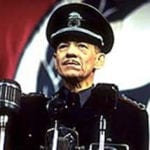 Weird Stuff
Weird Stuff  Weird Stuff
Weird Stuff  History
History 10 Times Trickery Won Battles
 Technology
Technology 10 Awesome Upgrades to Common Household Items
 Misconceptions
Misconceptions 10 Hilarious (and Totally Wrong) Misconceptions About Childbirth
 Weird Stuff
Weird Stuff 10 Warning Labels That Exist Because Someone Actually Tried It
 Health
Health Ten Confounding New Inventions from the World of Biomedicine
 Creepy
Creepy 10 Death Superstitions That Will Give You the Creeps
 Movies and TV
Movies and TV 10 Movies That Get Elite Jobs Right, According to Experts
 Weird Stuff
Weird Stuff 10 Times Real Laws Were Based on Bizarre Hypotheticals
 Animals
Animals 10 Inspiring Tales of Horses Being Human
 Weird Stuff
Weird Stuff 10 Typos That Accidentally Changed History
 History
History 10 Times Trickery Won Battles
 Technology
Technology 10 Awesome Upgrades to Common Household Items
Who's Behind Listverse?

Jamie Frater
Head Editor
Jamie founded Listverse due to an insatiable desire to share fascinating, obscure, and bizarre facts. He has been a guest speaker on numerous national radio and television stations and is a five time published author.
More About Us Misconceptions
Misconceptions 10 Hilarious (and Totally Wrong) Misconceptions About Childbirth
 Weird Stuff
Weird Stuff 10 Warning Labels That Exist Because Someone Actually Tried It
 Health
Health Ten Confounding New Inventions from the World of Biomedicine
 Creepy
Creepy 10 Death Superstitions That Will Give You the Creeps
 Movies and TV
Movies and TV 10 Movies That Get Elite Jobs Right, According to Experts
 Weird Stuff
Weird Stuff 10 Times Real Laws Were Based on Bizarre Hypotheticals
 Animals
Animals 10 Inspiring Tales of Horses Being Human
10 Shakedowns That Backfired Big Time
Extortion not only sullies the reputations of the accused, but it also typically results in serious time behind bars and may include thousands of dollars in fines for the extortionists themselves. Such crimes frequently make the news, especially when their victims are as famous as the actors, models, producer, celebrity chef, late-night television host, and rock-and-roll star’s widow on this list. No doubt about it: shakedowns can, and do, backfire big time.
Related: Top 10 Pieces Of Nazi German Propaganda That Backfired
10 Driving Ms. Ono
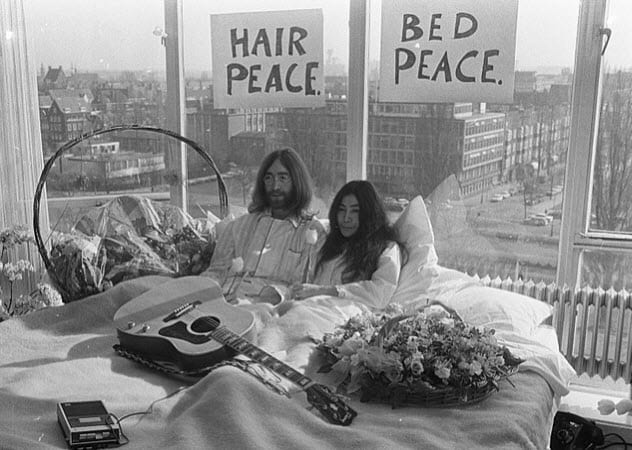
It wasn’t enough that Yoko Ono’s chauffeur, Koral Karsan, of Amityville, New York, wanted $2 million of her money; he also felt it necessary to have hit men standing by to murder her, a prosecutor said. Karsan’s attempt to shakedown John Lennon’s widow backfired big time when he was arrested on December 13, 2006, for first-degree attempted grand larceny. The driver said that Ono had engineered his arrest to prevent his pursuit of a sexual harassment case.
Karsan claimed to possess “embarrassing recordings and photographs of Ono,” a New York Times article states, and, once he returned home to Turkey, he planned to publish statements about them in a book, distribute the recordings to “European broadcast stations,” and showcase the photos on a secure Iranian Internet site.
After he ruined her life and those of her children, Karsan told Ono’s lawyer, Jonas Herbsman, he would have Ono killed. Karsan had been in Ono’s employ for six years or more, and he received an annual salary between $150,000 and $200,000 from her. Apparently, he wanted more.
In 2007, the charge against Karsan was reduced to attempted grand larceny in the third degree, a felony to which he pleaded guilty, and was sentenced to time served, which amounted to 60 days. He was released into immigration officials’ custody, his business visa having expired.
According to a “prepared statement,” Karsan admitted to having demanded $3,000, not $2 million, from Ono, which falls within the legal definition of third-degree grand larceny. In his statement, he admitted to “using hidden cameras to take pictures of Ms. Ono, and [to recording] Ms. Ono’s private conversations with her friends and family,” but, The New York Times reported, his statement expressed no “apology, regret, or remorse.”
He seemed to hint that he was motivated to do such harm to Ono because, as The New York Times observed, he claimed that she had “humiliated and degraded him, wrecking his marriage and making him so nervous that he ground eight of his teeth to the bone.” Although he suggested that he might share an account of his experiences, Karsan also signed a binding confidentiality agreement forbidding him from revealing such “details.”
9 “Terrible, Terrible Things”
In October 2019, late-night television talk show host David Letterman shared intimate details of his life with his audience, admitting to having participated in sexual relationships with women on his staff, to having written a phony $2 million check, and to having testified before a grand jury concerning these activities.
His awkward confession was set in motion by threats he had received in a package that included a letter advising him that its sender knew that he had done “terrible, terrible things.” Moreover, the sender threatened, “I can prove that you do these terrible things.”
However, “a large sum of money” would buy the sender’s silence, Letterman was assured. The package’s contents “contained . . . proof,” Letterman told his listeners, that the talk show host had, indeed, done “terrible, terrible things.” ABC News reporters Michael S. James and Lindsay Goldwert suggest that, if Letterman’s audience thought he was joking, they would soon learn that there would be no punchline to his monologue.
At the meeting at which Letterman handed off the fake check, his extortionist confessed that he intended to write Letterman’s biography as a “companion piece to the screenplay” that he also hoped to write; the book would include accounts of Letterman’s “infidelities.”
Letterman told his audience that the extortionist’s charges were true: the talk show host had, indeed, had multiple sexual encounters with women on his staff.
However, the shakedown didn’t go exactly as Letterman’s extortionist, Robert “Joe” Halderman, had hoped. Instead of $2 million in cash, a best-selling biography, and a hit movie, Halderman received six months in jail and was sentenced to 1,000 hours of community service.
8 Cops and Robbers
Edis Kayalar wanted $100,000 for the photograph he had of Cindy Crawford’s 7-year-old daughter. It was not a picture, he must have figured, that the supermodel would want the public to see. After all, the gagged child was bound to a chair.
Taken by the girl’s nanny, the photo would fetch big money from tabloid newspapers, Kayalar, “a former friend of the nanny,” advised Crawford and her husband Rande Gerber, CBS News writer Kealan Oliver reports.
A German citizen who was in the United States illegally, Kayalar was arrested and deported to Germany. His close call, apparently, had not been close enough; two months later, Kayalar telephoned Crawford, demanding $100,000. His attempt at extortion backfired. Instead of receiving the money he was after, he was charged; the same month, he turned himself in to German authorities.
At his trial in March 2010, he insisted that he had never tried to extort any money from Crawford. The $100,000 he had requested was simply money with which he would “cover costs” he had incurred as a result of being a good Samaritan in trying to warn Crawford that her nanny was a bad influence on the model’s daughter.
The trial judge, Joachim Spieth did not buy the defendant’s defense. “The attempted extortion was at an advanced stage and failed,” Judge Spieth said, and Kayalar was sentenced to 2 years in prison.
The reason for the photo? The nanny took the picture “as a joke during a game of ‘cops and robbers,’” Oliver reports.
7 An Offer He Couldn’t Refuse
Thomas George Paculis, of Newfield, New York, tried to hit up Paula Deen for $200,000. Instead, in a plea deal with prosecutors, he received a 2-year federal prison sentence for extortion and a year of supervised release.
According to an Associated Press account that appeared on the USA Today website on August 2013, Paculis had “tried to make a deal”: he wanted a non-disclosure agreement after having “threatened to publicly reveal damaging information” about the celebrity chef.
Deen had already “lost major endorsements,” the article observes, due to her having allegedly discriminated against employees based on race. She wouldn’t want any more bad press, Paculis had probably reasoned. What had prompted Paculis’s failed extortion attempt? He had experienced “bad economic times,” he said.
According to Federal Bureau of Investigation (FBI) Special Agent Brad Snider, Paculis e-mailed Deen’s attorney, Greg Hodges on June 27, with his demand for the money, after he had sent a June 24 e-mail message in which the extortionist had invited Hodges to “make me an offer I can’t refuse.”
Later, a Savannah Morning News article by Jan Skutch reports, during a conversation that was monitored by the FBI, Paculis agreed to take $200,000 in exchange for his silence. His arrest followed, on July 5. The newspaper states that, in addition to allegations of racial discrimination, Deen was being sued for sexual harassment, but “the [federal] case was dismissed with prejudice” in August 2013.
6 No Show
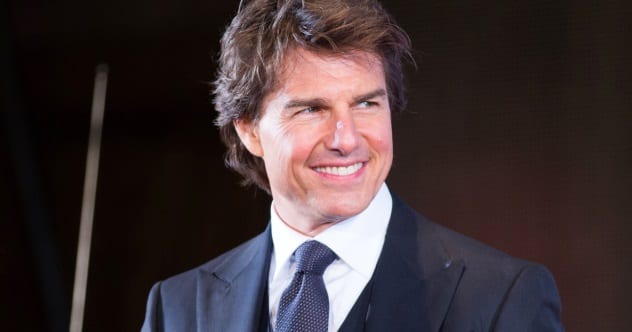
Extortionist David Hans Schmidt figured the stolen photos of Katie Holmes and Tom Cruise’s nuptials were worth a cool million dollars. The pictures might even have gone for $1.3 million, he reckoned.
Authorities disagreed. For them, the stolen photos were worth a couple of years in prison for Schmidt. That’s what was on the table after Schmidt had agreed to plead guilty to extortion. He was under house arrest until October 11, 2007, when he was scheduled to appear in court to enter his guilty plea and accept the consequences of his actions.
Schmidt failed to show up, but he had a good reason for being a no show: apparently, he had committed suicide. The tracker he wore indicated that he had not left his home. When police arrived at his townhouse at about 3:00 pm., they found him dead.
Ironically, although he had agreed to a stretch in prison, Schmidt had also planned to ask for probation. Why he would kill himself before he learned whether his request would be granted is a mystery that Schmidt took to his grave.
5 Hijacked Claims
Michael Avenatti wanted $25 million from Nike; instead, his attempt to extort the company cost the “celebrity attorney” a prison sentence. The lawyer’s attorneys argued for leniency. They pointed out the facts that his extortion attempt hadn’t worked, that he was a non-violent offender, and that he had been held in solitary confinement for 24 hours a day in New York City’s Metropolitan Correctional Center, the same hellhole that had confined Joaquin (“El Chapo”) Guzman. U. S. District Judge Paul Gardephe was unpersuaded. On July 8, 2021, the judge sentenced the disgraced lawyer to 2.5 years in prison.
According to reporter Michael McCann, the charges against Avenatti resulted from Avenatti’s insistence that, in addition to paying his client, former American Athletic Union coach Gary Franklin, $1.5 million, Nike should also pay Avenatti “and a co-counsel as much as $25 million to investigate company [recruiting] activities” or simply pay the $25 million “outright.”
The company had terminated Franklin’s employment, and, McCann says, Franklin had hired Avenatti after becoming concerned “about his possible legal exposure from seeing bribes of top recruits to attend particular colleges.”
Judge Gardephe declared that, in hitting up Nike, Avenatti was “hijack[ing] his client’s claims . . . to further his own agenda, which was to extort millions of dollars from Nike for himself.” The Manhattan federal jury agreed, McCann observes, and “convicted Avenatti of trying to extort $25 million from Nike while “depriving . . . Franklin of a right to Avenatti’s honest services.”
4 Topless Shots
Before fame claimed her, Cameron Diaz posed topless. After she became famous, John Rutter, the photographer who had snapped the pictures of her, tried to claim $3.5 million from her for the risqué photos, the price he hoped they would fetch from an interested buyer. Instead, he was sentenced to up to 5 years in the slammer for his attempt at grand theft and for committing forgery and perjury. Upon Rutter’s July 2005 conviction, Judge Michael Pastor, who considered the photographer a flight risk, “sent him immediately to jail,” according to a Seattle Times article concerning the crimes and punishment.
Rutter said that Diaz had signed a “model release,” but expert witnesses refuted the defendant’s claim, saying that the photographer had forged Diaz’s signature with the help of a computer graphics program.
Although Rutter’s attorney blamed Diaz for his client’s situation, arguing that his trial had pitted “a rich and famous celebrity [against] a hard-working photographer,” prosecutor David Walgren declared, “We don’t . . . tolerate serious crimes like forgery [and] perjury . . . be it against a celebrity or anyone else.”
3 A Memoir as Good as a Deathbed Confession
He was heir to a fortune, but, when police and FBI agents stormed the New York City apartment in which he was being held captive, they found the kidnapped victim unshaven, foul-smelling, [and] bound and blindfolded,” states Alex Traub, a reporter for The Irish Times.
The authorities arrested the apartment’s tenant, firefighter Mel Patrick Lynch, and one of his accomplices, Dominic Byrne, both of whom confessed to having abducted the victim. They also explained how they had committed the crime, showing the authorities “two garbage bags containing a $2.3 million, or €1.95 million, ransom,” Traub says.
At their trial, Lynch and Byrne were convicted of extortion, but not of kidnapping. In July 2020, shortly before his death at age 91, Byrne’s attorney, Peter DeBlasio, published his memoir, Let Justice Be Done, in which he finally told the truth: his defense of his client had been based on a lie.
The kidnapping was really just a hoax, DeBlasio had argued at his client’s trial. The victim, Samuel Bronfman II, the heir to the Seagram’s distilling fortune, had only pretended to have been kidnapped by Lynch and Byrne. The so-called kidnappers had intended only to shake down Bronfman’s family for money; it had been Bronfman’s own idea to “stage his own kidnapping.”
Reluctant to go along with the fraudulent abduction, Lynch was pressured into doing so when Bronfman threatened to tell the fire department that Lynch was a homosexual. In reality, this claim was as false as the allegation that Bronfman had masterminded his own kidnapping. Nevertheless, the jury had believed the defense and found Byrne and Lynch guilty only of extortion.
Forty-five years later, with DeBlasio’s publication of his memoir, the truth was finally established: “I want it to be clear to all who . . . read these pages that Samuel Bronfman was not a part of the kidnapping,” DeBlasio wrote. “Neither he nor Lynch were gay as far as anyone ever knew and certainly they were not lovers.”
Ironically, as Stephen Gillers, a law professor at New York University, points out, DeBlasio’s confession was a breach of legal ethics, intended not so much to set the record straight, perhaps, as to clear the lawyer’s own conscience. DeBlasio’s “obligation to his client continues forever, even after his client’s death,” Gillers declares, so DeBlasio’s saying that “’My client, who was acquitted of kidnapping, is really a kidnapper’ [is] exactly what he’s not allowed to say.”
Despite what amounts to DeBlasio’s “deathbed confession” (he died a few months after his memoir’s publication), Bronfman’s reputation never truly recovered. “It poisoned the atmosphere forever for Sam,” says the case’s prosecutor Geoffrey Orlando. “He will forever be tagged with that allegation.”
2 Compromising Photos
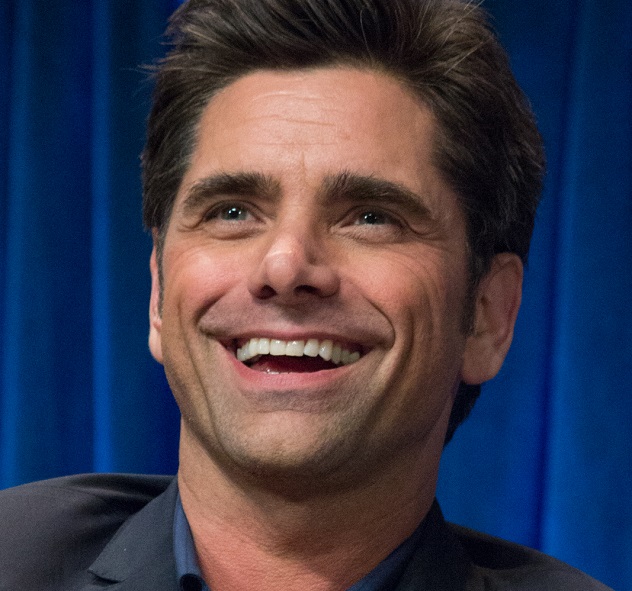
Add actor John Stamos to the growing list of celebrities who have been shakedown victims. In October, five years after they had become friends during Stamos’s visit to Disney World in Orlando, Florida, in 2004, and they had attended a party together, Allison Lenore Coss sent the actor a series of e-mails, advising him that a man calling himself “Brian” had obtained “compromising photos of them,” the FBI website reports.
Stamos was suspicious, since “nothing untoward [had] happened at the party.” Coss not only insisted that she herself had seen the pictures, but claimed that she had acquired one herself, for $10,000. However, she never sent Stamos a copy of it.
A month later, the plot thickened, as “Brian L.” himself began to e-mail Stamos. He demanded $680,000, to be paid in unmarked bills and dropped off at a “clandestine” point. Stamos contacted the FBI, one of whose agents began to communicate with “Brian L.” The extortionist encouraged the money drop-off at a location at which he was already present. Both Coss and “Brian L.” were arrested on the spot, while “Brian L.” was still on the telephone with the FBI.
An examination of the defendants’ computers and e-mail accounts left no doubt that “Brian L.,” who turned out to be Scott Edward Sippola, and Coss were the authors of all of the e-mails “Brian L.” had sent to Stamos. Neither The National Enquirer nor The Star Magazine had offered to buy, or had even seen, the “compromising photos” that Sippola and Coss claimed to have tried to sell the publications’ reporters. Likewise, neither defendant ever showed either Stamos himself or FBI agents any of the photographs they claimed to possess, presumably because no such pictures existed.
During the conduct of the investigation, FBI agents discovered that Coss and Sippola had previously tried to extort money from Stamos. In the earlier attempt, Coss and Sippola, posing as “Jessica T.,” claimed to be pregnant by Stamos and said they had “compromising photos of him.” At trial, the defendants admitted that these claims were false. As a result of their convictions, Coss and Sippola each received four-year prison sentences.
1 High Rollers
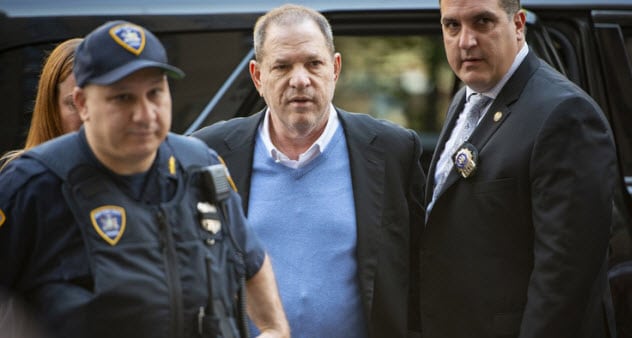
Universally condemned, the disgraced former movie producer and convicted sex offender Harvey Weinstein was victimized by extortionist Vivek Shah, who also preyed on other high rollers.
An actor, Shah had had bit parts as a bank hostage in The Dark Knight (2008) and as the maitre ‘d in Our Family Wedding (2010). He supplemented his acting career with his second job as an attempted extortionist, Besides Weinstein, Shah targeted Relativity Media’s CEO Ryan Kavanagh; coal industry millionaire Chris Cline; Groupon co-founder Eric Lefkofsky; Playtone owner Gary Goetzman; oil heiress Dannine Avara; and Buffalo Sabres owner Terry Pegula.
Shah planned to collect $120 million in liquid funds. According to West Virginia Metro News, he also had a secondary goal: he hoped that his “crime spree might bring some attention to his stagnating acting career.” His modus operandi was as simple as it was heinous: he mailed threats to kill the spouses and children of his victims if his demands were not met.
He demanded various amounts of payments from his victims. From Weinstein, he expected $4 million, but $16 million from Lefkofsky. According to the FBI, Shah also set up an elaborate system to conceal his ill-gotten money. “He fraudulently opened financial accounts in his victims’ names . . . . [and] made purchases using prepaid debit cards that he registered under aliases.” He avoided “being traced when he committed criminal acts using his computer . . . . [and he] created numerous accounts with the U. S. Postal Service under false names.”
His criminal career caught up with him when FBI agents arrested him in Schaumberg, IL, on August 10, 2012, and his dreams of wealth ended, when, as the FBI states, he was “sentenced to seven years and three months in federal prison for orchestrating [his] multi-million-dollar extortion scheme.”


